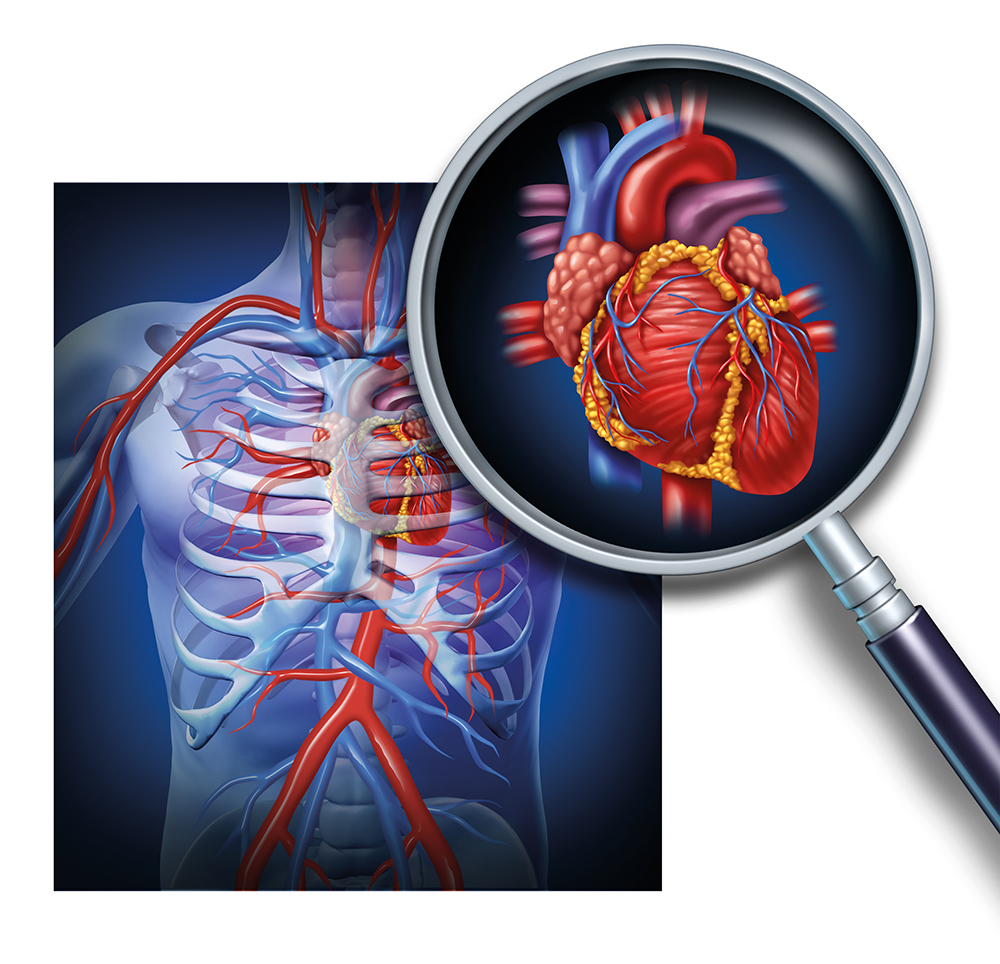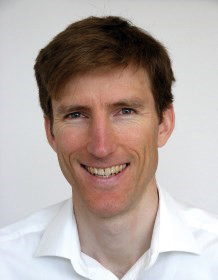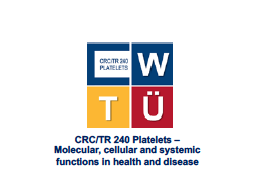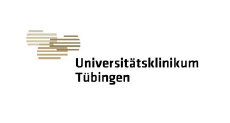Dr Madhumita Chatterjee | Professor Michael Lämmerhofer | Professor Tilman Schäffer – Platelet Lipidomics: A Novel Approach to Assessing Cardiovascular Risk
Cardiovascular disease (CVD) is the world’s leading cause of preventable death. A multidisciplinary team of researchers, Dr Madhumita Chatterjee (University Hospital Tübingen), Professor Michael Lämmerhofer and Professor Tilman Schäffer (both engaged with the University of Tübingen) are investigating the previously unrecognised molecular mechanisms that direct the function of tiny blood cells known as platelets in the formation of blood clots or thrombi, a condition that contributes to thrombosis and atherosclerosis. Their work is leading to the development of a new diagnostic tool to determine the risk of thrombosis in patients with CVD and also suggest potential therapeutic strategies to prevent such complications.
CVD – A Global Killer
Cardiovascular disease (CVD) is a broad classification of diseases involving the heart or blood vessels. CVD includes coronary artery disease (CAD) that causes heart attack, angina, sudden cardiac death, and cerebral stroke. CAD is characterised by a reduction in the blood flow to the heart muscle due to atherosclerosis in the blood vessel (coronary artery) supplying the heart.
When atherosclerotic plaques rupture or erode, this triggers activation of platelets in the bloodstream leading to thrombus development at that site which is called atherothrombosis. Such thrombotic complications or formation of blood clots can then block the arteries supplying major organs like the heart or brain. The development of atherothrombosis is a complex and highly regulated process involving interaction between the blood vessel wall, platelets, endothelial cells, and plasma coagulation proteins.
There are many risk factors for CVD: age, sex (with males being more susceptible than females), tobacco use, physical inactivity, excessive alcohol consumption, unhealthy diet, obesity, genetic predisposition, raised blood pressure, raised blood sugar, and raised blood cholesterol (hyperlipidaemia).
Hyperlipidaemia refers to abnormally elevated levels of any or all the lipids or lipoproteins in the blood. Lipids (water-insoluble ‘fat’ molecules) are transported in a protein capsule termed lipoprotein. The size of that capsule, or lipoprotein, determines its density. Traditionally, to measure lipid levels in a patient’s blood as an indicator of their CVD risk, the plasma levels of four major lipid categories are tracked – total cholesterol, low density lipoprotein (LDL), high density lipoprotein, and triglycerides. However, such a measure does not do justice to the complexity of the disease.
Ongoing research on platelet lipidomics involving Dr Madhumita Chatterjee (at the University Hospital Tübingen), Professor Michael Lämmerhofer and Professor Tilman Schäffer (both engaged with the University of Tübingen), has resulted in a much deeper understanding of the hidden role that platelets have in the metabolism and transportation of blood lipids and the consequences for the pathophysiology of CVD.
Platelets, or thrombocytes as they are also known, contain a diverse variety of lipids that play a fundamental role in the regulation of platelet structure, signalling, and activation while promoting thrombosis, as recently reviewed by Dr Chatterjee while discussing her perspectives on the rapidly evolving field of platelet lipidomics, published in the Journal of Thrombosis and Haemostasis. When platelets attach or adhere to the site of blood vessel injury so that they can close the wound, they also deliver the harmful lipids contained within. This may gradually lead to atherosclerosis and increase the risk of subsequent CVD.
‘Platelets are an active accomplice in vascular inflammation and atheroprogression.’

The Platelet Lipidome: ‘A Trojan Horse That Advances Undetected and Silently’
Lipidomics is the study of pathways and networks of lipid biogenesis, metabolism, and their functions in biological systems. Such research has been significantly substantiated by recent technical advances in analytical methods, allowing lipidomic profiling of blood plasma and also cellular components in the circulating bloodstream. The term ‘lipidome’ describes the complete lipid profile within a biological system such as plasma or cells.
Although still widely used, it is accepted that the measurement of traditional lipid biomarkers in plasma does not disclose the exact picture of lipid levels within circulating blood cells, which are separated from the blood as plasma samples are prepared in the testing laboratory. This may be one of the reasons why such routine procedures cannot accurately predict cardiovascular risk or clinical outcome in patients with hyperlipidaemia or be used to monitor the therapeutic efficacy of lipid lowering drugs such as statins.
Dr Chatterjee has longstanding expertise in the field of thrombosis and CAD. Professor Lämmerhofer and Professor Schäffer are at the cutting edge of new analytical chemistry and imaging technologies. Together, they are investigating platelet lipidomics and the functional consequences of platelet-lipid association. Professor Lämmerhofer is an expert in analytical chemistry and high-performance liquid chromatography combined with tandem mass spectrometry (LC-MS/MS). His laboratory is engaged in the analysis of samples for the lipidomic profiling of platelets and plasma. Professor Schäffer is an expert in advanced imaging and nanoanalytical methods, examining the mechanistic properties of cells. His laboratory is exploring the physical properties of platelets under hyperlipidemic conditions and how that might influence platelet responsiveness.
In late 2015, working with Professor Lämmerhofer and Professor Schäffer, Dr Chatterjee and the team started performing lipidomic analysis of platelets in CAD patients, those that are at high risk of developing thrombosis and those who were experiencing major cardiovascular complications.
Following the lipidomic analysis of platelets in a small group of CAD patients, the team observed a significant alteration in their platelet lipidome, showing elevated levels of several oxidised phospholipids, triglycerides, cholesteryl esters, acylcarnitines, sphingomyelins, and ceramides. Although most of the patients had a normal plasma cholesterol profile as determined by traditional testing of plasma lipids, and several had already been administered lipid lowering drugs (such as statins), their platelets still contained evidence of potentially harmful atherogenic lipids. These results presented the opportunity to track pathological changes in the circulatory platelet lipidome and pointed to the fascinating prospect that the platelet lipidome might be used to reflect cardiovascular risk.
This study also revealed that platelets are in constant and dynamic interaction with the plasma lipids, and therefore, they carry large quantities of lipids imported from plasma. Some of these lipids are further metabolised internally within platelets to form more reactive and harmful atherogenic lipids. These are not recorded in the routine diagnosis of plasma lipids.
Dr Chatterjee describes the platelet lipidome as ‘a Trojan horse that advances undetected or silently’ to transfer and deposit atherogenic lipids at the site of blood vessel injury to initiate atherosclerosis. For example, Dr Chatterjee and colleagues have shown that platelets can take up LDL, which is then oxidised to more deleterious oxLDL. They have found increased levels of oxLDL in platelets from CAD patients and particularly in patients suffering from a more severe form of the disease known as ST-elevation myocardial infarction, a serious type of cardiac complication arising from blockage of the artery supplying the heart.
For conceptualising and coordinating this work, published in the reputed and high ranking European Heart Journal in 2017, Dr Chatterjee received the prestigious Uta und Jürgen Breunig-Forschungspreis from German Heart Research Foundation and German Society for Internal Medicine (der Deutsche Herzstiftung und Deutsche Gesellschaft für Innere Medizin).
In 2018, Dr Chatterjee, Professor Lämmerhofer and Professor Schäffer received funding from Deutsche Forschungsgemeinschaft (DFG, German Research Foundation; project no.374031971 – TRR 240) to assess the full impact of all lipids carried in the blood, including plasma lipids and those in peripheral blood cells, such as platelets and monocytes. With their previous vital insights into the platelet lipidome and its implications for CAD, Dr Chatterjee, Professor Lämmerhofer, and Professor Schäffer are now pursuing an extensive clinical investigation with CAD and stroke patients to characterise signature pathologic lipid metabolites in platelets for diagnostic and prognostic purposes. In the future, routine analysis of the platelet lipidome at clinics will aid in assessing the risk of recurrent thrombo-ischaemic complications resulting in heart disease and cerebral stroke, for example.
‘Our aim is to validate the therapeutic potential of a new anti-platelet strategy to check pathological thrombosis without enhancing bleeding tendency.’

Therapeutic Potential of a New Anti-Platelet Strategy
Whilst hyperlipidaemia enhances the risk of coronary atherothrombosis, the contribution of platelets to lipid metabolism in CAD remains poorly defined. Platelets also have a decisive role in interacting with immune cells and regulate their inflammatory functions. Thrombus, once formed, becomes a hotspot for further inflammatory processes. Platelets release inflammatory mediators which exaggerate thrombo-inflammation. Furthermore, the pathophysiologically compromised and affected vessel walls in CVD patients trigger circulatory platelet activation and prompt platelet adhesion to the existing atherosclerotic plaques, which facilitates deposition of atherogenic lipids contained in platelets, thereby increasing inflammation and plaque instability.
Therefore, platelets are considered to be an active accomplice in vascular inflammation and atheroprogression, and their pathological attributes need to be controlled by the use of anti-platelet therapies. Dr Chatterjee is currently coordinating research to unravel the molecular mechanisms governing thrombotic and thrombo-inflammatory platelet functions in CVD.
Several anti-platelet drugs are currently available to effectively reduce thrombosis and cardiovascular death. However, they can have serious side effects. Prolonged use of anti-platelet therapies such as aspirin is known to increase the risk of internal bleeding, and so better alternatives are actively being sought by the team in their current research. As Dr Chatterjee explains, ‘Our aim is to validate the therapeutic potential of a new anti-platelet strategy to check pathological thrombosis without enhancing bleeding tendency.’
At the core of Dr Chatterjee’s research on thrombosis and thrombo-inflammation is understanding the role of G-protein-coupled receptors (GPCRs) – a large family of cell surface proteins that convert a diverse array of extracellular stimuli (such as chemokines and lipids) into intracellular signals, and eventually, regulate the biological response of cells like platelets.
Together with her colleagues at the University Hospital Tübingen, Dr Chatterjee has shown that the surface expression of the GPCR chemokine receptors CXCR4 and CXCR7 on platelets is significantly enhanced in patients with acute coronary syndrome and that the basal expression levels of these receptors influence recovery and prognosis.
The molecular mechanisms and interactions which regulate platelet thrombotic activity are complex and are influenced by an array of surface receptors linked to a network of activatory and inhibitory signalling cascades. However, Dr Chatterjee has identified the GPCR chemokine receptor CXCR7 as an unconventional and novel mechanism that may regulate platelet survival and platelet mediated thrombotic functions, which was published in the journal Circulation Research in 2014. Currently, she is actively engaged in the pre-clinical validation of the therapeutic potential of CXCR7 as an anti-platelet drug target in several animal models of thrombosis and CVD.
On reflecting on her work, Dr Chatterjee concludes, ‘As scientists, it is our job to bring new, better diagnostic, prognostic and therapeutic alternatives to clinical practice to improve patient care. However, the translation from basic research to clinical practice is time consuming and requires stringent validation in large clinical cohorts, and possibly in multicenter studies. Nevertheless, we may look forward to a successful clinical implementation of these strategies that will facilitate the recommendation of ‘tailor-made’, personalised preventative medicines, to individuals at high risk of thrombosis and thereby cardio/cerebrovascular diseases.’
Reference
https://doi.org/10.33548/SCIENTIA487
Meet the researchers

Dr Madhumita Chatterjee
Department of Cardiology and Angiology
University Hospital Tübingen
72076 Tübingen
Germany
Dr Madhumita Chatterjee works as Staff Scientist (Akademische Mitarbeiterin-Wissenschaftlerin) and Project lead for the research programme ‘Regulation of the Platelet Lipidome and its Implications in Thrombo-inflammation’ at the University Hospital Tübingen, Germany. Dr Chatterjee achieved her PhD in Life Sciences at Jawaharlal Nehru University, India, in 2008, and then achieved a Postdoctoral Diploma at the Department of Medicine, Karolinska Institute, Sweden, in 2011. She is an experienced academic and research scientist, skilled in thrombosis and haemostasis, clinical cardiovascular biomarkers for coronary artery disease, atherosclerosis, molecular biology, and vascular inflammation. She is the recipient of the Uta und Jürgen Breunig-Forschungspreis from the German Heart Research Foundation and German Society for Internal Medicine (der Deutsche Herzstiftung und Deutsche Gesellschaft für Innere Medizin), 2017 for the work ‘Regulation of oxidized platelet lipidome: Implications for coronary artery disease’.
CONTACT:
E: madhumita.chatterjee@med.uni-tuebingen.de
W: http://www.dhz-tuebingen.de/Kardiologie/index.php/kfo274.html
https://www.uni-wuerzburg.de/rvz/sfb-tr-240/startseite/
http://59852678.swh.strato-hosting.eu/

Professor Michael Lämmerhofer, PhD
Institute of Pharmaceutical Sciences
University of Tübingen
72076 Tübingen
Germany
Professor Michael Lämmerhofer has been Full Professor (W3) of Pharmaceutical (Bio-)Analysis at the University of Tübingen since 2011. He graduated in Pharmaceutical Sciences in 1992 and earned his PhD in Pharmaceutical Chemistry in 1996 at the University of Graz, Austria. Between 1997 and 2011 he was Assistant Professor and since 2002 Associate Professor at the University of Vienna in the Department of Analytical Chemistry. From 1999 to 2000 he conducted postdoctoral research in the Department of Chemistry at the University of California, Berkeley. His research interests include platelet lipidomics, enantioselective metabolomics and lipidomics, biopharmaceuticals analysis, and the development of functionalised separation materials.
CONTACT:
E: michael.laemmerhofer@uni-tuebingen.de
W: www.bioanalysis.uni-tuebingen.de
https://www.uni-wuerzburg.de/rvz/sfb-tr-240/startseite/

Professor Tilman Schäffer
Institute of Applied Physics
University of Tübingen
72076 Tübingen
Germany
Professor Tilman Schäffer is Full Professor of Physics/Medical Technology at the University of Tübingen. He graduated with a PhD in Physics in 1998 from the University of California, USA and a year later became research group leader at the Department of Molecular Biology, Max-Planck-Institute for Biophysical Chemistry, Göttingen. In 2002 he became Assistant Professor of Physics at the University of Münster, before becoming Associate Professor of Applied Physics at the University of Erlangen-Nürnberg between 2007-2011. Professor Schäffer is an expert in advanced imaging and nanoanalytical methods. His laboratory is exploring the physical properties of platelets under hyperlipidemic conditions and how that might influence platelet responsiveness.
CONTACT:
E: tilman.schaeffer@uni-tuebingen.de
W: http://www.bioforce.uni-tuebingen.de/en/staff.php?page=schaeffer
https://www.uni-wuerzburg.de/rvz/sfb-tr-240/startseite/



Creative Commons Licence
(CC BY 4.0)
This work is licensed under a Creative Commons Attribution 4.0 International License. 
What does this mean?
Share: You can copy and redistribute the material in any medium or format
Adapt: You can change, and build upon the material for any purpose, even commercially.
Credit: You must give appropriate credit, provide a link to the license, and indicate if changes were made.
More articles you may like
Grandmothers: Innovation Through Tradition
Grandmother Project – Change through Culture (GMP) is an organisation dedicated to documenting the role of grandmothers and demonstrating the effectiveness of grandmother-inclusive strategies in improving the health and well-being of women, children, and adolescents. GMP’s groundbreaking work challenges conventional wisdom to transform community-based interventions in Africa and beyond, harnessing a powerful but often overlooked resource: the wisdom and influence of grandmothers.
Dr Robert Larkin | Cultivating Change to Improve Soil Health and Increase Potato Yield
Environmental quality and food production are facing the pressing challenges of climate change and global population growth. Dr Robert Larkin from the United States Department of Agriculture-Agricultural Research Service (USDA-ARS) and a team of plant scientists developed and tested a range of crop management systems to help overcome these compounding challenges. Their work is improving soil health and increasing the yield of potato crops, contributing to the future food security of nations.
Professor Giorgio Buttazzo | Artificial Intelligence and a Crossroads for Humanity
Where do we stand with artificial intelligence? Might machines take over our jobs? Can machines become conscious? Might we be harmed by robots? What is the future of humanity? Professor Giorgio Buttazzo of Scuola Superiore Sant’Anna is an expert in artificial intelligence and neural networks. In a recent publication, he provides considered insights into some of the most pressing questions surrounding artificial intelligence and humanity.
Dr Ralf Adam | New Technologies Shaping the Future of Oral Hygiene
Understanding the efficiency of various toothbrush technologies is essential for achieving optimal oral health. Dr Ralf Adam, who leads a dedicated team at Procter & Gamble in Germany, is keen to investigate the complexities of these technologies. His team have provided new insights into the best toothbrush types for plaque removal and the maintenance of gum health. By highlighting the importance of informed oral care decisions and ongoing investigations, this vital research works towards ensuring everyone can achieve a brighter, healthier smile.




